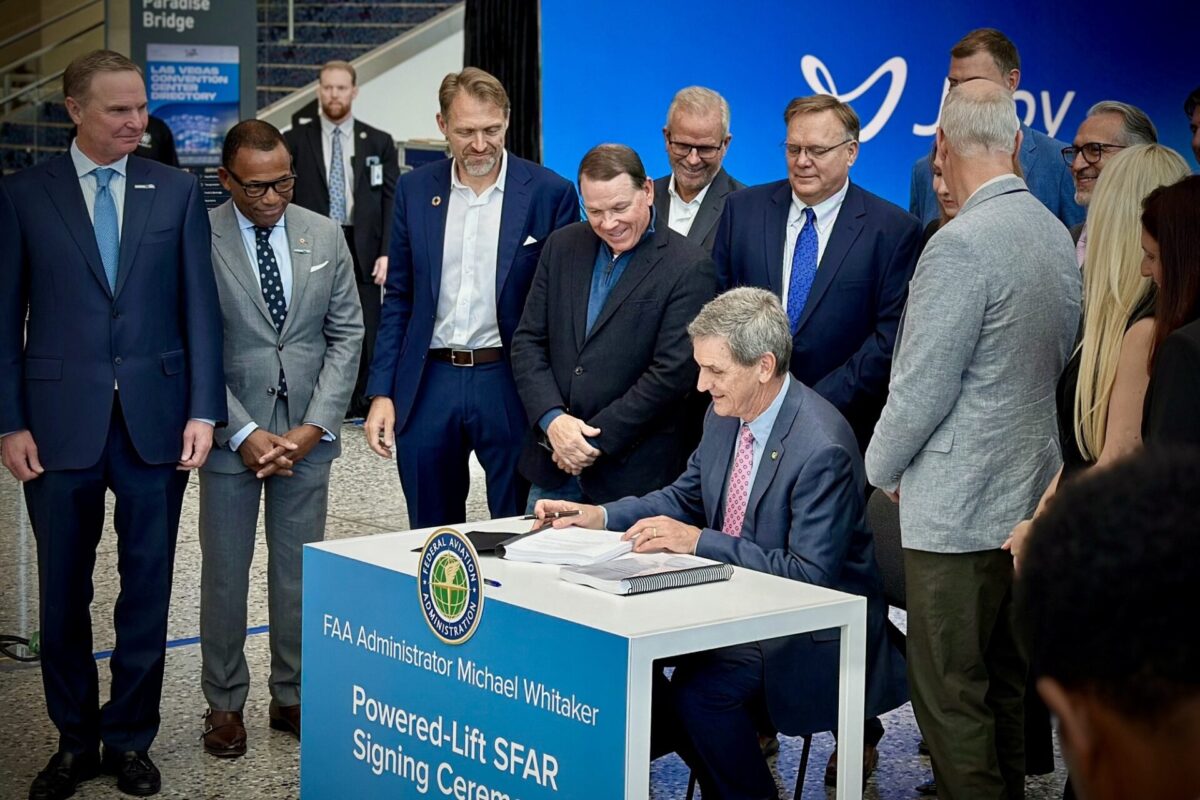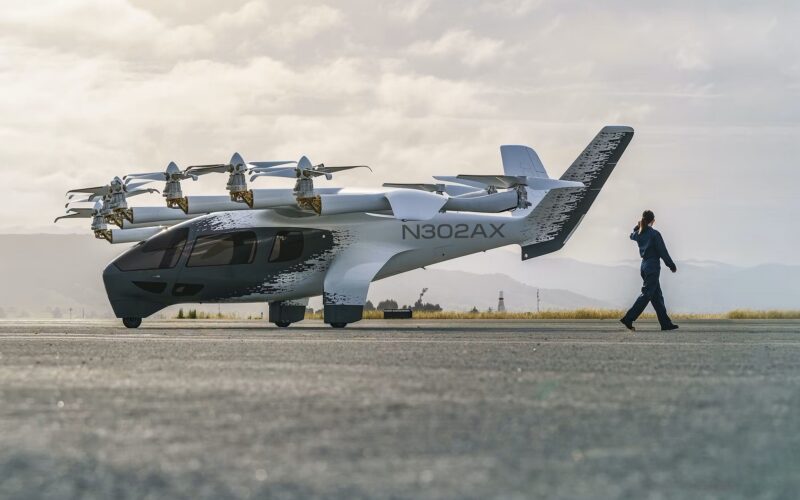The world’s leading electric vehicle takeoff and landing (eVTOL) developers have been reacting to news that the Federal Aviation Administration (FAA) has approved a revolutionary new aircraft category in a major step for the evolution of air taxis.
At 2024 NBAA-BACE in Las Vegas on October 22, 2024, the FAA Administrator Mike Whitaker announced the introduction of the ‘powered-lift’ category, thus paving the way for the qualifications and training that instructors and pilots must hold in order to fly eVTOL aircraft.
The FAA said that the powered-lift aircraft ‘final rule’ is the last “piece in the puzzle for safely introducing these aircraft in the near term”.
Powered-lift aircraft, which includes air taxis, cargo delivery and a variety of operations within urban and rural areas, represents the first completely new category of civil aircraft since helicopters were introduced back in the 1940s.

“The FAA will continue to prioritize the safety of our system as we work to seamlessly integrate innovative technology and operations. This final rule provides the necessary framework to allow powered lift aircraft to safely operate in our airspace,” said FAA Administrator Mike Whitaker. “Powered lift aircraft are the first new category of aircraft in nearly 80 years and this historic rule will pave the way for accommodating wide-scale Advanced Air Mobility (AAM) operations in the future.”
The FAA initially considered that eVTOL aircraft might follow the framework of existing aircraft regulations, but it has been concluded that an entirely new category would be required.
Ultimately, it was decided that new pilot training and qualifications were needed for a unique aircraft, one that can take off and land vertically like a helicopter and fly like a plane during cruise flight.
The final rule includes changes to numerous existing regulations and establishes a Special Federal Aviation Regulation (SFAR) with new requirements to facilitate instructor and pilot certification and training.
It also applies helicopter operating requirements to some phases of flight and adopts a performance-based approach to certain operating rules.
Additionally, it enables pilots to train in powered-lift with a single set of flight controls, as opposed to legacy rules which require two – one for the student and one for the instructor.
Last year, the FAA published a blueprint for how Urban Air Mobility vehicles would operate, a key element in maturing the overall AAM concept.
Leading eVTOL developers respond
Following an official signing ceremony at NBAA-BACE, both Joby Aviation and Archer Aviation welcomed the Special Federal Aviation Regulation and praised the FAA for publishing the document before the December 2024 deadline.
“The regulation published today will ensure the U.S. continues to play a global leadership role in the development and adoption of clean flight,” said JoeBen Bevirt, Founder and CEO of Joby. “Delivering ahead of schedule is a testament to the dedication, coordination and hard work of the rulemaking team.”
✅Big news from the FAA today! Administrator Mike Whitaker joined industry leaders at the @NBAA BACE conference in Las Vegas to celebrate the release of new regulations that will help bring electric aircraft like the Joby air taxi into US skies. pic.twitter.com/BHjp7YKOFp
— Joby Aviation (@jobyaviation) October 22, 2024
A spokesperson for Joby added that the new regulation “lays the groundwork necessary” for the developer to launch commercial passenger service in the United States.
In a statement on October 23, 2024, Archer Aviation said: “We appreciate the FAA’s continued partnership and proactive approach to advancing the eVTOL industry with today’s release of the final powered-lift Special Federal Aviation Regulation (SFAR). This comes ahead of schedule, incorporates key feedback from across the industry and is yet another foundational element toward our goal of the U.S. leading the way in commercializing UAM. We’ll continue to formulate our operational plans to align to this final rule.”

